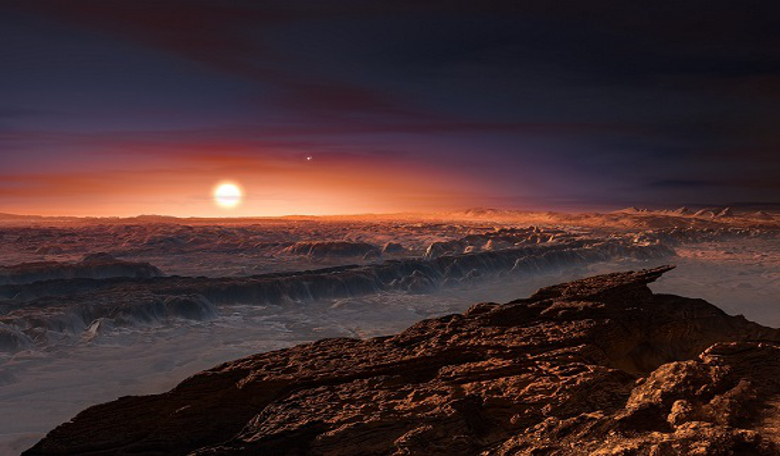Astronomers observing our nearest star Proxima Centauri have found a rocky planet not much bigger than the Earth orbiting its cool red host star every 11 days. This new world, designated Proxima b, has a temperature suitable for liquid water to exist on its surface, if it were present and is the closest exoplanet to us.
Proxima Centauri is a red dwarf star located just over four light-years from our Solar System in the constellation of Centaurus. Its light is masked by its brighter companions, Alpha Centauri A and B, however the tell-tale sign of a tiny wobble in the star caused by the gravitational pull of an orbiting planet was spotted by astronomers using the HARPS spectrograph on the European Southern Observatory's 3.6-meter telescope at La Silla.
The team of astronomers, led by Guillem Anglada-Escudé of Queen Mary, University of London, used HARPS as part of an ongoing project to observe Proxima Centauri called the Pale Red Dot campaign. "The first hints of a possible planet were spotted back in 2013, but the detection was not convincing. Since then we have worked hard to get further observations off the ground with help from ESO and others. The recent Pale Red Dot campaign has been about two years in the planning,” explained Anglada-Escudé.
Detecting the minute back-and-forth wobble of a star to ascertain if a planet is orbiting it or not, is very difficult in its own right, however active stars such as Proxima Centauri hinder the process further as their natural brightness variations easily mimic the presence of a planet.
Proxima Centauri regularly approaches Earth at speeds equivalent to normal human walking pace – about 5 kilometres per hour – and at opposite times in those cycles it recedes at the same speed. After careful analysis of these tiny movements known as Doppler shifts, which are repeated with a period of 11.2 days, the data revealed the presence of a planet with a mass at least 1.3 times that of the Earth, orbiting about 7 million kilometres from the dwarf star. In comparison, the average distance between the Earth and the Sun is 149.60 million kilometres (92.96 million miles).
Proxima b is even closer to its host star than Mercury is to our Sun, however as Proxima Centauri is cooler than the Sun, Proxima b is within the star’s ‘habitable zone’ meaning that if water were present on its surface, it could be found in a liquid state. Nonetheless, despite having a pleasant temperature, the planet could be subjected to intense ultraviolet and x-ray flares from its parent star, due to its close proximity.
"The discovery of the potentially habitable planet around Proxima Cen is the culmination of 30 years of work that has improved stellar velocity measurement precision from 300 m/s to 1 m/s," said Paul Butler from Carnegie Institution, Washington. Butler is one of many scientists who have been observing Proxima Centauri for years and his work, along with data from specialists all around the world have been included on the paper submitted to Nature, describing this milestone finding.
”This work has resulted in the discovery of hundreds of planets around the nearest stars, and now a potentially habitable planet around the nearest star in the sky. This work confirms the Kepler satellite and precision velocity studies that have shown that potentially habitable planets are common, and points the way to the future when such planets will be directly observed with giant ground- and space-based telescopes.”











